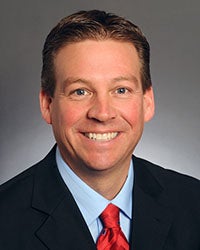Today’s buffer rules enforced inconsistently
Published 3:16 pm Saturday, April 4, 2015
Senate Report, by Dan Sparks
Buffer strips have become a hot topic across the state and in our area. The governor visited the district this week to talk about his proposal, and last week a community meeting was held in Blooming Prairie on the same issue. I appreciate the governor’s desire to tackle clean water issues and his willingness to come out to rural Minnesota to talk about it. However, the current proposal needs some work, and it is unclear if buffer strips are the most effective tool to protect our state’s water ways.
We all care about clean water — especially those who live and work in rural areas. Farmers and rural landowners do their best to be good stewards of the land and water. Not only is a healthy environment important to their livelihood, it is also the same water they draw from their wells — that their families use to clean, cook and drink. Their input is important in considering new clean water efforts.
I’ve been hearing concerns about a one-size-fits-all approach from conversations I’m having with stakeholders. Our first step to achieving better results is to make sure we are enforcing measures in current law and putting into place the best practices for specific lands. Some have expressed concerns with this approach, stating that current buffer rules are enforced inconsistently and that this leads to failure. If this is the case, then it is exactly the issue we need to address. We shouldn’t create additional rules in need of greater enforcement and oversight, when we already lack the resources to implement and enforce current measures.
I have been working with the state association of soil and water conservation districts on legislation to secure stable operating funding for all districts, and there are at least four other proposals this session to do the same thing. The soil and water conservation districts are locally elected boards, and their staff are the technical experts to implement needed improvements. They know the land and what will be most effective. In one area a 50-foot buffer might be what is needed, another location might call for a larger buffer, while still another may require something smaller or some alternative measure entirely.
The buffer bill is currently in the Senate Jobs, Agriculture and Rural Development Committee, which I chair, and we certainly will be listening to all the stakeholders as we work toward a solution that moves us forward on the issue.
The Legislature has taken a short break to allow members to be at home with their families during the Easter/Passover holidays. It is also a time for legislators to connect with people in the district because our time at home is often limited to weekends during the session.
Albert Lea Mayor Vern Rasmussen and I met to review the city’s legislative priorities and where things are standing at this time. One of the topics we discussed is workforce housing. I am the chief author of legislation that would coordinate these efforts at the state level as well as provide tax credits for investors in local projects and grants to help with new developments. I also met with Freeborn County Commissioner Mike Lee about transportation needs. The Legislature and governor agree that we need to address the transportation funding shortfall. This is a long-term, ongoing issue and any proposal needs to include support for local road and bridge repairs.
If you would like to share your thoughts on any of these or other topics of interest please don’t hesitate to contact my office. I hope that you all have a safe and happy holiday and are enjoying the return of more pleasant weather.
Dan Sparks, DFL-Austin, is the state senator for District 27.


